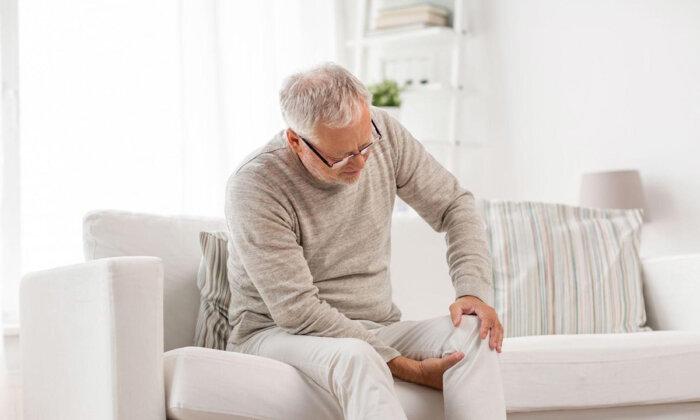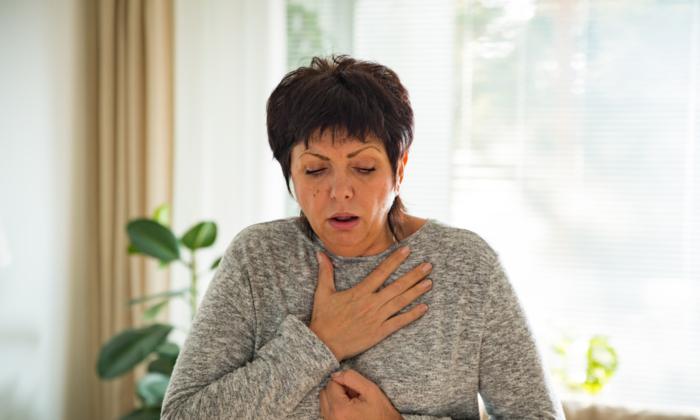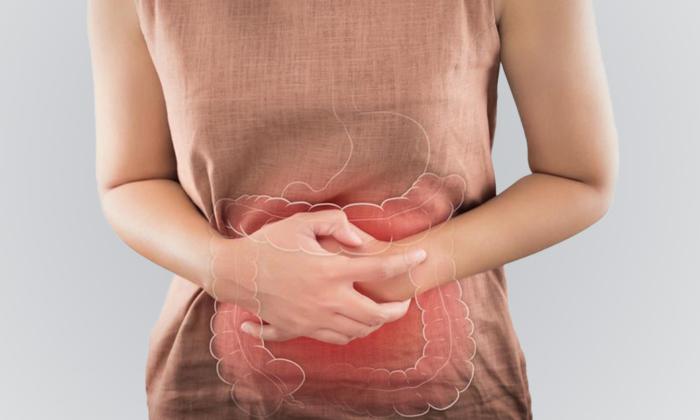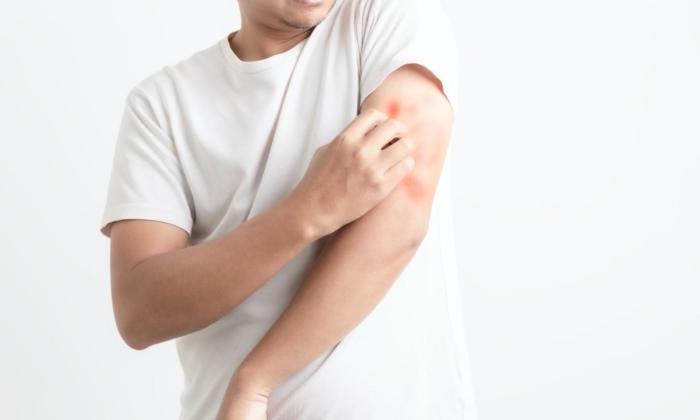Dr. Tse See-li, a Hong Kong-registered traditional Chinese medicine (TCM) practitioner, said that long-term pain is mostly caused by blood stasis, and the use of Chinese herbal medicine that promotes blood circulation and removes blood stasis can resolve the pain once and for all. He also recommends one Chinese herbal tea which can help improve the body’s microcirculation and remove blood stasis.
“Blood stasis” is a common concept in TCM. TCM believes that physiological activities of the human body not only rely on blood circulation to supply nutrients, but also depend on the energy inside the body—the movement of qi.
Tse points out that qi (energy) stays in the blood, and the movement of blood is driven by qi. Only with qi can the blood be pushed to the capillaries and flow around the whole body. If the body doesn’t have enough qi, the microcirculation will become poor and blood stasis will easily occur.
He likened the movement of qi and blood to the water flow in a river. Sandbars are formed at the turns when the speed of the water slows down and the sediment gradually settles. When qi and blood circulation are blocked, pain will also occur, which is described as “pain if there is no flow” in TCM theory.
Old Wounds Bring New Pain
The cause of blood stasis is not only caused by one’s specific constitution, but also by external or internal injury. An injury causes blood to leave a vessel, forming localized bruising. If the blood stasis cannot be absorbed by the body, it will also affect the microcirculation of nearby tissues, and the blood stasis thus formed could enlarge with time, which in turn affects the tissue function of the body.Tse once treated a patient with complaints of chest pain. He had difficulty breathing, and the pain was so stressful that he couldn’t sleep at night. He tried painkillers and acupuncture but to no avail. He also tried stacking a hot pack stuffed with herbal medicine on the visibly affected area and found many bruises floating to the skin surface. Tse found it very strange and asked him if his chest had ever been injured.
The patient recalled that he once fell on his back—nine years ago. At the time of the injury, the pain was relieved by massage with Diedajiu (Chinese medicinal liniment), and since then, he had forgotten about it. Tse speculated that when he fell, he injured his thoracic spine area, resulting in minor blood stasis, but as the tissues near the blood stasis couldn’t be nourished by fresh blood, it in turn affected other body functions over time.
“TCM believes that if blood stasis does not go away, new blood will not be produced. Because of the accumulation of blood stasis, fresh blood cannot reach that area, and the stasis will spread further and further,” Tse said.
Tse’s treatment is to use Chinese herbal medicine to make a medicinal bag, boil it with wine, and then place the bag on the affected area. Under the action of temperature and medicinal power, the blood stasis will be loosened and becomes easier for the body to absorb. The whole process takes about half an hour to an hour. For bruises from fresh injuries, it can be recovered after two or three treatments, while for the old and more stubborn ones, it takes five to 10 treatments for a full recovery.

Joint Pain From Bruising
Modern-day scientific research has also found that many Chinese herbal medicines can improve pain. A meta-analysis study found that patients with knee arthritis can improve their pain by soaking the affected area in a Chinese herbal solution, with an effective rate 20 percent higher than conventional treatment.Tse has been using this stasis-removal therapy to treat many patients with long-term joint pain. He said that he once came across a patient who had sought medical treatment everywhere and had been seeing many Chinese and Western doctors both locally and abroad, yet his joint pain just became more and more serious, and he was unable to work in the end.
Some doctors advised him to have an artificial joint replacement, while others suggested he be referred to a neurologist. The patient finally found Tse, and after five treatments of blood stasis removal, the patient was able to return to his work.
Cold Drinks Can Induce Blood Stasis
Apart from blood stasis caused by bruises from injury, Tse pointed out that there’s another kind of injury called an “internal injury,” which may be caused by food or medicine.He believes that one of the reasons why modern-day people are more prone to pain is that they often take cold drinks, which can easily affect blood circulation and make pain symptoms appear at a younger age. In particular, women drinking too many cold beverages are prone to dysmenorrhea, and even uterine fibroids, leading to infertility.
Chinese Herbal Tea to Promote Blood Circulation, Remove Blood Stasis
Ingredients: astragalus 75 grams (2.7 ounces), angelica 7.5 grams (0.27 ounce), red peony root 7.5 grams (0.27 ounce), Chuanxiong rhizome 3.75 grams (0.13 ounce), peach kernel 3.75 grams (0.13 ounce), safflower 3.75 grams (0.13 ounce).
According to Tse, this prescription is based on the “Buyang Huanwu (Yang-supplementary & Five-returning) Decoction” by Wang Qingren, an eminent TCM practitioner in the Qing Dynasty, and adjusted to the appropriate amount for daily health care purposes. He often drinks it himself.
Tse pointed out that this prescription uses a large amount of astragalus, focusing on nourishing qi and blood, combined with other medicinal materials that can promote blood circulation, it has the effect of dispelling blood stasis.
Astragalus nourishes qi, can strengthen heart contraction, reduces thrombus formation, promotes bone marrow hematopoiesis, and regulates blood sugar.
Angelica invigorates qi, activates blood, moistens the intestines, and relaxes the bowels.
Paeoniae Rubra has an inhibitory effect on platelet aggregation and thrombus formation, can increase coronary artery flow, and expand the pulmonary blood vessels.
Chuanxiong rhizome can strengthen the heart and can treat angina pectoris. For example, it can treat dementia in the elderly when combined with ginseng.
Peach kernel promotes blood circulation and removes blood stasis, moistens the intestines, and relieves constipation. Safflower can enhance capillary microcirculation.
However, it should be noted that Chinese medicine classifies people’s constitutions into different types. With such a difference in constitutions, the corresponding medicinal materials needed are also different. Tse advised that if you are a person who often feels dry and hot in cold weather, you belong to the “yin deficiency and internal heat” group. In that case, you should not take too much of this tea.
*Some herbs mentioned in this article may be unfamiliar, but they are generally available in Asian supermarkets.




